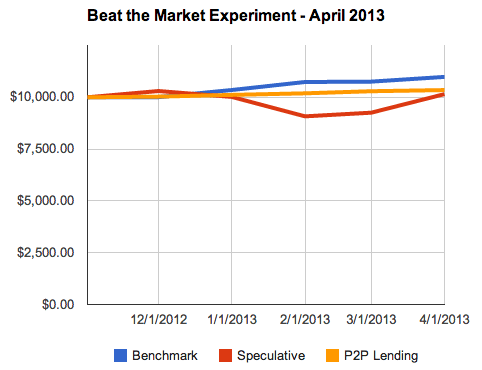My Benchmark For Tracking Dividend Portfolio Performance
Post on: 18 Апрель, 2015 No Comment

If you are a do-it-yourself investor who buys individual stocks (i.e. dividend stocks), as many of my readers are, then we are slaves to our investment returns. But how do we know how we are performing. If we earned 12% last year, that may seem like a pretty good return. However, if the overall market provided a return of 22% then you didnt do so hot. It would have been much better for you to have bought the market through an index fund or ETF. It is therefore important for investors to set up a benchmark that we can compare our performance to to gauge how we are performing. There are few different options for setting up a benchmark I will provide a couple and then tell you how I do it.
Tracking Against an Established Index
The most common way to compare and evaluate portfolio returns is to put your returns up against that of an established stock market index. The index you can use can be the S&P 500, Dow Jones, Nasdaq, Russell 3000, S&P/TSX, or any other stock market index in the world. The most common index to compare results to is the S&P 500.
For more information on how to track your performance using this type of strategy, please check out Gen Xs article titledUse the Right Benchmark to Accurately Measure Investment Performance .
My biggest concern with this approach is that investors often do not have a portfolio made up of 100% equities. In fact, if you believe that asset allocation is a large determinant in portfolio returns. then you probably shouldnt. With that in mind, I would argue that it is not prudent to compare the results of a portfolio that is not 100% equities to that of a 100% equity index such as the S&P 500. My approach is a bit different and is based on some research done by Richard Croft of R. N. Croft Financial Group Inc .
Tracking Against an Portfolio Benchmark
Richard Croft has devised a series of portfolio benchmarks that take into account that certain investors have certain asset allocations in their portfolios. They have pegged these benchmarks as FPX Indexes. There are three choices of indexes to use as a benchmark each having a set asset allocation amongst equities, fixed income, and cash:
The FPX Index I track my portfolio to is the FPX Growth as it is the closest one to my actual asset allocation based on my stage in the investing lifecycle and views on portfolio structure. My primary reason for using this as my benchmark is it allows me to compare my overall portfolio and not just one component of it. Again, if I was investing in 100% U.S. equities then I could track my portfolio against the S&P 500. I dont have 100% equities, so the FPX Growth index provides me with a more realistic snapshot of how I should be doing based on a set asset allocation and asset allocation provides an investor with 70% of a portfolios return!














